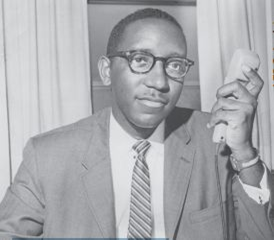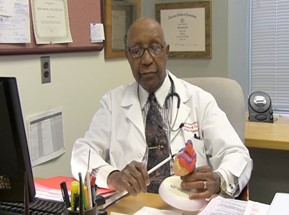Bias
A middle-aged black woman presents to her local emergency department via emergency medical services (EMS) with chest and back pains, nausea, and vomiting. She has a history of IV drug abuse and is disheveled in appearance. Prior to her arrival, EMS notes that her chest pain appears non-cardiac and provides supportive care while en route to the hospital. She is triaged to the appropriate care and an emergency provider assesses the patient.
The patient continues to have chest discomfort and nausea. The emergency team agrees with the EMS assessment and deems her symptoms as atypical for a cardiac etiology. An EKG is performed which demonstrates subtle ST-segment elevations in her inferior leads as well as faint reciprocal changes. However, the catheterization lab was not activated at this point.
High sensitivity troponin ultimately revealed a modest enzyme leak and the cardiology team was consulted. The patient was urgently taken to the cath lab to reveal an acute lesion of her proximal right coronary artery. There were no complications during the procedure and she ultimately had an uneventful hospital course.
Implicit bias refers to the attitudes or stereotypes that affect our understanding, actions and decisions in an unconscious manner. These biases are activated involuntarily, without an individual’s awareness or intentional control. Unfortunately, we are all susceptible to bias and there is extensive evidence showing how bias can lead to differential treatment of patients by race, gender, age, weight, language, socioeconomic status, and insurance status. As such, it begs the question, if our patient had no history of drug abuse or was white, would their acute myocardial infarction been treated faster?
A seminal 2007 study of internal medicine and emergency medicine residents found that, while the participants reported no explicit racial bias, Implicit Association Tests (IATs) indicated an implicit preference towards White Americans. Further, the higher the preference, the more likely that physician was to treat Whites and not treat Blacks with early thrombolysis in the setting of acute myocardial infarction.
While it is clear the effects of implicit bias in medicine, it is also clear that implicit bias is malleable. There are a number of leading strategies for combating implicit bias including stereotype replacement, counter-stereotypic imaging, individuation, perspective-taking, and increasing opportunities for contact with individuals from different groups. Further, new research must be conducted to find more innovative techniques for managing implicit bias. As clinicians, it is our responsibility to be constantly aware of our bias and to actively work to address that bias in every patient encounter.
References
- Green AR, Carney DR, Pallin DJ, et al. Implicit bias among physicians and its prediction of thrombolysis decisions for black and white patients. J Gen Intern Med. 2007;22(9):1231-1238. doi:10.1007/s11606-007-0258-5
“The views, opinions and positions expressed within this blog are those of the author(s) alone and do not represent those of the American Heart Association. The accuracy, completeness and validity of any statements made within this article are not guaranteed. We accept no liability for any errors, omissions or representations. The copyright of this content belongs to the author and any liability with regards to infringement of intellectual property rights remains with them. The Early Career Voice blog is not intended to provide medical advice or treatment. Only your healthcare provider can provide that. The American Heart Association recommends that you consult your healthcare provider regarding your personal health matters. If you think you are having a heart attack, stroke or another emergency, please call 911 immediately.”

 dical wards. He then went on to become the first African-American resident in internal medicine at the University of Maryland School of medicine and the first African-American cardiologist in the state of Maryland in 1965.
dical wards. He then went on to become the first African-American resident in internal medicine at the University of Maryland School of medicine and the first African-American cardiologist in the state of Maryland in 1965.  Despite improvements in health distribution inequalities, African-American communities are continuously plagued with cardiovascular disease at an alarming rate. Some of the main contributors to the high burden of disease are the persistent and increasing degrees of limited access to healthy food, low socioeconomic status, and poor nutritional awareness. To address this, Dr. Saunders advocated for community screening and outreach in barbershops and churches in order to engage the black community in non-traditional spaces. In 2006, he developed the Hair, Heart and Health program, an innovative program that trained barbers and hairstylists to pre-screen customers for hypertension and then make referrals for medical care.
Despite improvements in health distribution inequalities, African-American communities are continuously plagued with cardiovascular disease at an alarming rate. Some of the main contributors to the high burden of disease are the persistent and increasing degrees of limited access to healthy food, low socioeconomic status, and poor nutritional awareness. To address this, Dr. Saunders advocated for community screening and outreach in barbershops and churches in order to engage the black community in non-traditional spaces. In 2006, he developed the Hair, Heart and Health program, an innovative program that trained barbers and hairstylists to pre-screen customers for hypertension and then make referrals for medical care.